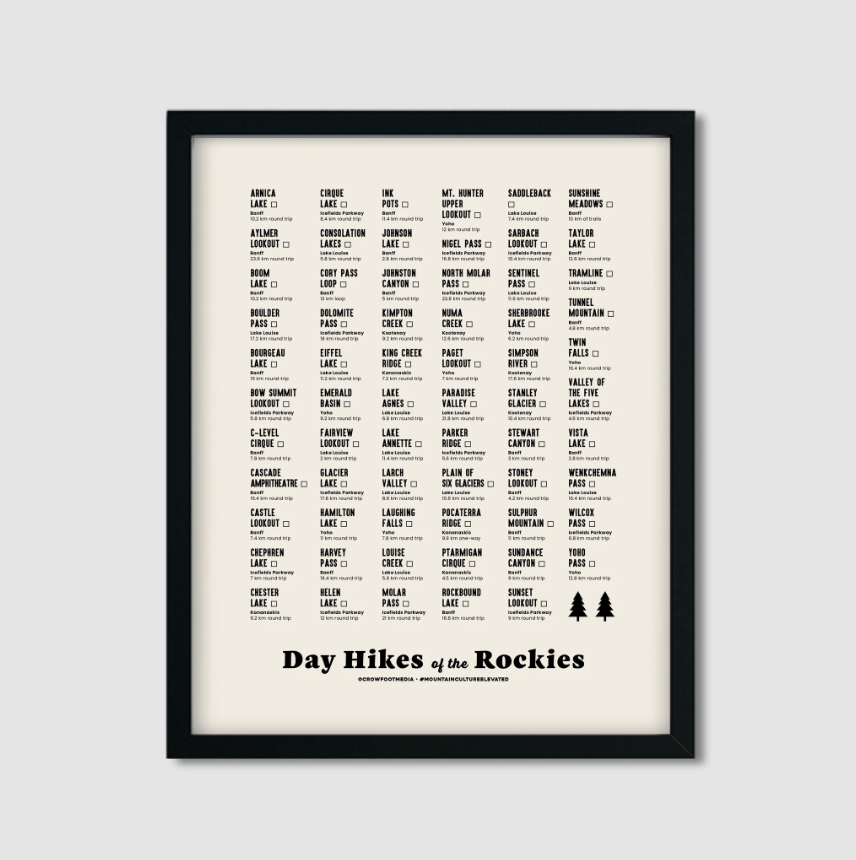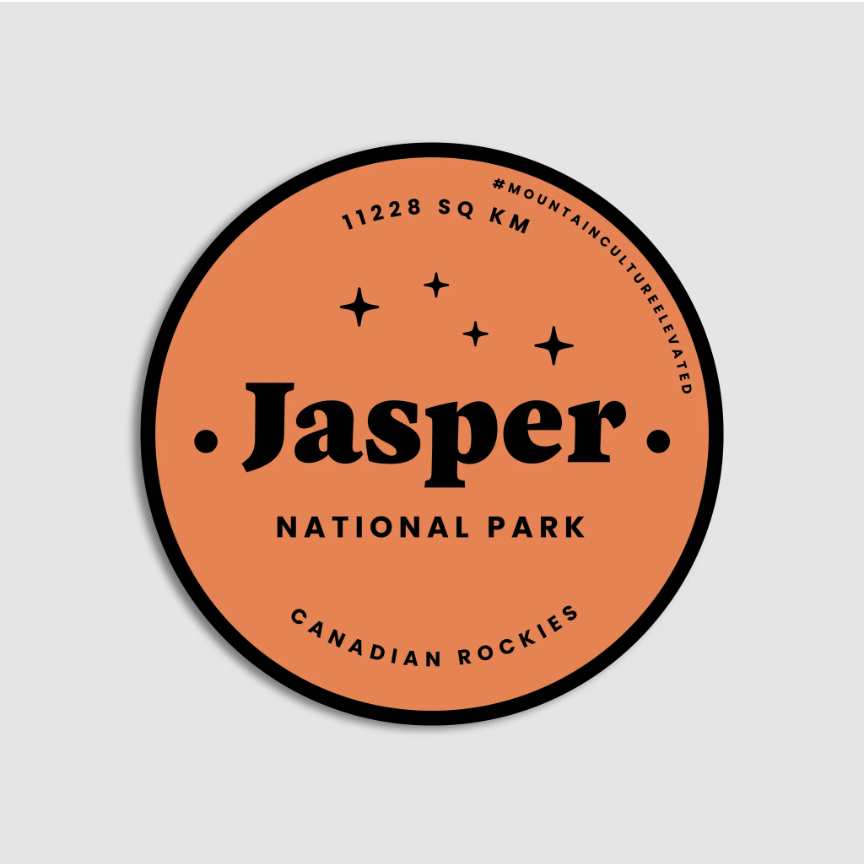GO WILD: 4 REASONS TO EXPLORE BANFF’S BACKCOUNTRY
By Andrew Hardingham
It’s no secret that in the Canadian Rockies we find one of lower Canada’s largest and unfettered wilderness areas. It’s also right at our fingertips. Outdoor aficionado, Andrew Hardingham, gives us four great reasons to lace up our hiking boots, and his best recommendations for wilderness experiences in Banff National Park.
1 / HAVE THE PLACE TO YOURSELF
It’s not unusual to load up a daypack and explore some of the more accessible valleys, peaks, lakes and lodges in close proximity to the TransCanada Highway. It doesn’t take long to realize that the summer months can be busy on those trails, and it’s better to avoid them until the crowds settle down.
But the truth is, even in the busy summer months, walking a little bit further will usually bring you some solitude. Do an overnight hike and watch the backcountry become quiet with only a trickle of like-minded humans joining you at the camps. Maybe go even farther, making it a two-night trip and I’m sure you’ll find the wilderness becomes exclusively yours.
There are 1500 km of trails, 50 backcountry campsites, and two trail shelters in Banff National Park alone. I’ve been exploring as many as I can to try to figure out if “Canada’s Most Visited” national park has a place where you can be alone. So far I’ve found that place on almost every hike I’ve done.
Recommendations for Day Hikes and Overnight Hikes:
Egypt Lakes
A relaxed, 13-km (one-way) hike from the Sunshine Parking lot to the first lake will connect you with the Great Divide Trail. This area is one of Banff’s premiere lake destinations, and the hike spends much of its second half at tree line and in the alpine. Spend a night and hike to all six lakes and several cascading waterfalls. Stay in the shelter or camp in one of the area’s tent sites. Campsites include Healy Cr (E5), Egypt Lk (E13) and Egypt Lake Shelter.
→ Read More: Trip Report: Egypt Lake, Banff National Park
Skoki
This hike can be a single day hike visiting Hidden Lake and Ptarmigan Lake or it can be made into a two- to three-night trip with the possibility of visiting ten lakes in the region. Spend a night at Baker Lake (9 km from Temple Lodge) or continue over Deception Pass and on to Skoki Lodge. Campsites include Hidden Lk (SK5), Baker Lk (SK11) and Merlin Meadows (SK18).
→ Read More: Trip Report: Skoki Region, Banff National Park
Twin Lakes
The steep, 8-km Arnica Lake Trail will take you up the north-facing side of Storm Mountain and past Vista and Arnica Lakes. It’s a great trail with a view. Make sure you continue on to Lower Twin Lake. It’s only 0.8 km past upper Twin Lake, and you will be rewarded with and incredible view of a massive, cascading waterfall pouring down a steep wall into this beautiful lake. Campsite: Twin Lk (TW7).
2/ FOLLOW THE FISH TO FREEDOM
Today, this region is a fly-fisherman’s paradise. But of the 1464 lakes in Banff, Jasper, Yoho, Waterton, Revelstoke and Glacier National Parks, it was found that over 95 per cent of the lakes did not contain fish until they were stocked for sport fishing in the early and mid-twentieth century! Many of these stocked fish were native Cutthroat Trout, but other invasive species were also stocked for sport. Although changing the aquatic ecosystems all those years ago was not our shiniest moment in national parks history, it doesn’t change the fact that the fishing is incredible! Just remember to pack your best fishing sunglasses, the sun reflection on the water will make you very tired for your hike back.
If fishing is your gig, let the sport be your gateway to some incredible scenery. And if you are one of those crazy fly-fishing nuts who absolutely needs to catch fish no matter how great the scenery is, consider this: Banff and Jasper National Parks hold some of the last “pure” Westslope Cutthroat Trout remaining in the world. These fish are most ready to rise to a dry fly. For any avid fly-fisherman, that’s reason enough to get hiking.
In my fly-fishing world, I’ve found one thing to be true: it’s as much about the fish you catch as where that fish will take you. Having travelled to many destinations around the world in pursuit of new and interesting fish species, it’s still the high alpine lakes of the Canadian Rockies that excite me the most. So, get out there, wet your lines, and maybe you’ll meet the aquatic locals.
→ Check out the Fishing Regulations for the mountain parks before you cast your line.
Recommendations for Fishing Lakes:
Taylor Lake
You’ll find the Taylor Lake trailhead just past Castle Mountain Junction on the west side of the TransCanada Highway. An easy 7 km hike in will put you on this scenic lake with many trout species to target, including the native Westslope Cutthroat Trout and Brook Char species.
Boom Lake
A relaxed, 5 km hike in to this lake will see you in a pretty valley on a lake full of Westslope Cutthroat Trout. They are smaller trout (10 to 14 inches), but they are hungry and willing to take a dry-fly most of the spring, summer and fall. Most people who fish this lake catch many!
Rockbound Lake
A stunning area located behind Castle Mountain, this 9 km hike up Silverton Creek is a nice day trip. Lots of fun fish will be there to rise to a dry fly or a streamer. You may miss a lot of fish here because you’re always staring at the scenery.
3/ GET WAY OFF THE BEATEN TRACK
In Alberta there are 100 million acres of public lands. Banff National Park makes up 6,641 square kilometers of this land. Today, there are areas of the mountain parks that are as wild as the day Banff was established in 1885.
Approximately 96% of Banff National Park is wilderness, and from a hiker’s perspective, it’s easy to spend time in areas with little to no human impact. These areas of Banff are called Random Camping areas and are indicated in blue on the Backcountry Visitor’s Guide. They are located in the far-off reaches of the park, along the boundary, and allow you to camp wherever you find yourself tiring from the day’s journey (though no fires are permitted).
In these areas, you will be alone. You won’t see back roads or neighbouring crown land cut blocks scarring the vista. You won’t have trail signs or finished lumber making water crossings easy. Chances are a lot of the trails will not be human made, but instead animal-built for easy access to the mountain passes and valley streams. If you have it in you, check it out.
Interested in Random Camping? Purchase a wilderness pass and make a reservation with Parks Canada at one of the Visitor Information Centres.
Multi-Day Hike Recommendations:
The Palliser Range
If you really want to get away, this is a mountain range you’ll want to consider. Spectacular mountain pass trails will keep you company for the week you spend exploring the boundary of Banff National Park, Don Getty Provincial Park and several public lands. This is a trip you’ll want to customize yourself, as there are many entrances, exits and routes to choose from. One of the more beautiful spots to enter is starting at the Norquay Parking Lot and following Elk Lake Trail 12 km to Elk Lake, and continuing 9.5 km on Elk Summit Trail to the CR15 campsite. After this point, you will be in the Random Camping area and you may camp anywhere that suits you, as long as it is 5 km from the trailhead.
Forty Mile Creek Trail
There will be other hikers on this trail, but it is one of Banff’s more remote wilderness trails. Starting at Mt Norquay Parking lot and finishing at Johnston canyon on Hwy 1A. This 38 km trip can be done in 2 days, but 3 days makes it stand out. Mystic Lake is gorgeous as is Mystic Pass and they both make the entire hike worth it! If you want to make it a 4-5 night trip head up to Sawback and Rainbow Lakes, then follow Sawback Creek to the Cascade River and turn left to go over Badger Pass. It’s an amazing mountain range (Sawback Range) and chances are you will be alone for most of this adventure.
Martin Lake and the Clearwater River Drainage
Beautiful lakes, rivers and mountain passes await discovery here. A good way to access this remote wilderness is hiking toward Devon Lakes at Mosquito Creek campground on the Icefields Parkway, then follow the Clearwater Valley Trail.
Alexandra River Trail
This trail starts near the headwaters of the North Saskatchewan River, just before Panther Falls on Hwy 93N. This area of Banff National Park is raw and brings you close to The Lyells and Mt. Columbia, some of the highest peaks in Alberta.
4/ SEE THE FOREST FOR THE TREES
The national and provincial parks are the last bastions of untouched forests in the lower western provinces. It’s extremely hard to find an area in British Columbia or Alberta that hasn’t been logged or seen the impacts of this industry, except for in the mountain parks.
Although logging has opened up much of the backcountry to us – thanks to logging roads that allow faster and deeper access to remote regions – it comes at a price: the scars left behind from a fresh or even twenty-year-old logging project never leave you with a feeling of isolation. The unfettered wilderness of the national and provincial parks is the best thing about them. What so many people don’t realize is that the views that we enjoy here are so pristine and special because we have protected these areas from big industry.
So, here in these parks, there are few scars beyond the small fragments of former fire roads, hiking trails, horseback trails and campsites. You don’t need to hike for long to get away from traces of human impact. You can see it the way the First Nations people saw it all those years ago – untouched and wild!
Recommendations for Mountain Vistas/
Harvey Pass at Mt. Bourgeau
Just before you finish the scramble up Mt. Bourgeau, you hit Harvey Pass. This area is deep and dramatic, and offers striking views of Mt. Assiniboine.
Whistling Pass
This pass, located between Haiduk Lake and Egypt Lake, offers amazing views of this backcountry region of Banff National Park, including Mt. Ball and the Egypt Lake area.
→ Read More: Trip Report: Egypt Lake, Banff National Park
Marvel Pass
This is the pass between Marvel Lake and Gog Lake near Mt. Assiniboine Lodge. This alpine pass along the Continental Divide offers so much to look at that you’ll want to give enough time to let it all settle in.
Born and raised in Banff, Andrew Hardingham is a fly-fisherman, snowboarder, adventurer and expressionist who enjoys making films and funny stories come to life.
A NOTE FROM CROWFOOT MEDIA: You, the reader, are responsible for your own safety and gathering the information you require to tackle these trips. Please adventure safely.











